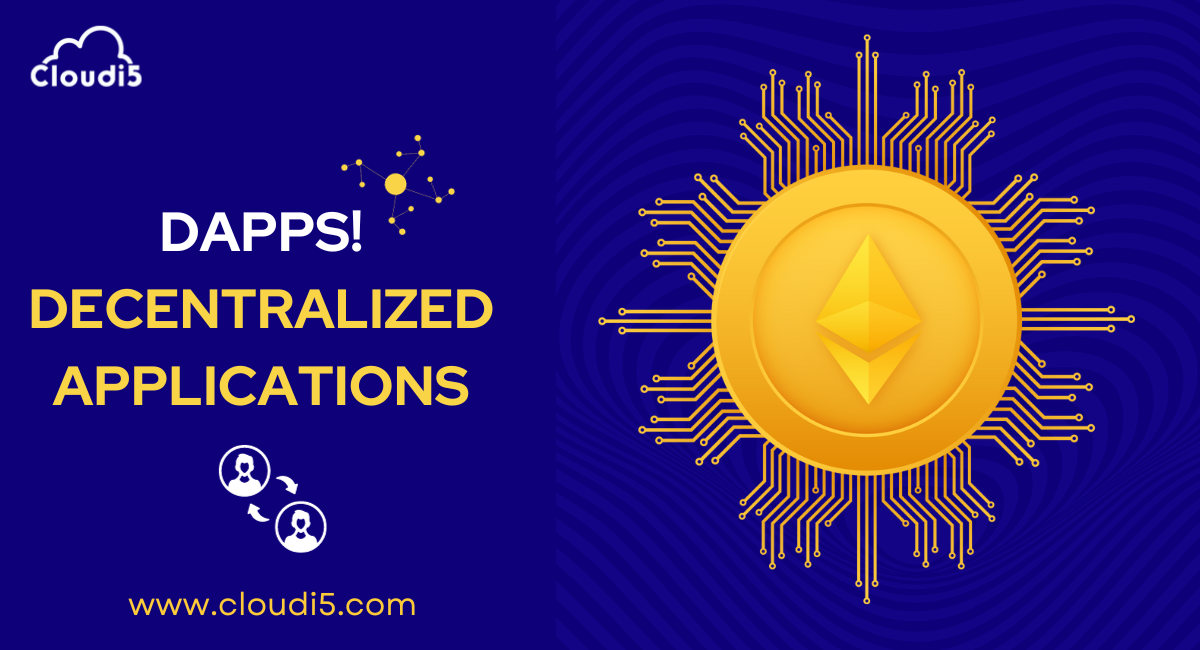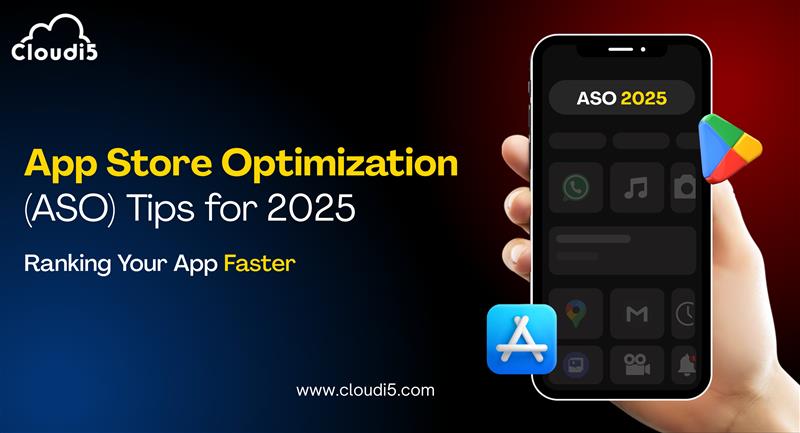
DApps: The Future Of The Web Powered By Blockchain
Ladies and gentlemen, boys and girls, step right up! Today, we're venturing into the dazzling world of DApps, where the internet goes on vacation from its usual routine and puts on a show.
What are DApps, you ask? Well,
DApps, or decentralized applications, are built on blockchain technology, which means they're secure, transparent, and tamper-proof. But DApps are more than just secure; they're also a lot of fun.
In this blog, we're going to explore the Dapp world and discover all the amazing things they can do. From decentralized social media to decentralized gaming, DApps are changing the way we interact with the web. They represent the future of blockchain technology, offering a more exciting and inclusive online experience.
But don't worry, dear reader, we're not going to get too serious here. We're going to have some fun and learn about DApps in a lighthearted and engaging way. So buckle up, because we're about to take a wild ride through the DApp carnival!
Okay, enough waiting. Let's get into the blog!
Before we dive into DApps, we need to understand the basics.
So,
What is Blockchain?
Blockchain is a distributed ledger technology that records transactions in a way that is secure, transparent, and tamper-resistant. It consists of a chain of blocks, each containing a set of transactions, and it operates on a decentralized network of computers.
The use of blockchain in web development has the potential to revolutionize various aspects of online applications and services.
What is Ethereum?
Ethereum is an open-source, decentralized blockchain platform that allows developers to build and deploy smart contracts and decentralized applications (DApps). It was created by Vitalik Buterin in 2015 and has become one of the most prominent and widely used blockchain platforms alongside Bitcoin.
Now,
What is a DApps?
A DApp, or decentralized application, is a software program that runs on a decentralized network of computers, often utilizing blockchain technology. Unlike regular web apps that depend on central servers controlled by one entity, DApps are decentralized, open-source, and less vulnerable to censorship and tampering.
Let me explain this concept with a real-world example:
Uniswap
Uniswap is a popular DApp that operates on the Ethereum blockchain. It is a decentralized exchange (DEX) that allows users to swap various cryptocurrencies without the need for a centralized intermediary like a traditional exchange.
Understanding DApps
DApps are a new breed of software applications that leverage blockchain technology to function. Unlike traditional web applications that rely on central servers and databases, DApps operate on a decentralized network of computers, known as a blockchain.
This means that DApps are not owned or controlled by any single entity, making them resistant to censorship, fraud, and downtime.
Key Characteristics of DApps:
- Decentralization: DApps run on a distributed network of nodes, removing the need for intermediaries and central authorities.
- Open Source: Most DApps are open-source, allowing anyone to review their code, contribute to their development, and even create their own versions.
- Cryptographic Security: Transactions and data within DApps are secured using cryptographic techniques, making them highly resistant to hacking.
- Tokenization: Many DApps use blockchain tokens, such as cryptocurrencies, to facilitate transactions and incentivize participation.
- Smart Contracts: DApps often employ smart contracts, self-executing agreements with the terms of the contract directly written into code.
The Future of the Web: DApps and Beyond
DApps are just the beginning of the decentralized web revolution. As blockchain technology continues to mature and evolve, we can expect even more innovative blockchain applications to emerge. Here are some predictions for the future of the web powered by blockchain:
- Enhanced Privacy: DApps will offer users greater control over their personal data and privacy, reducing the reliance on centralized platforms.
- Cross-Chain Compatibility: DApps will become more interoperable, allowing for seamless communication and transactions across different blockchains, a pivotal aspect of blockchain technology's role in web development.
- Mainstream Adoption: As user-friendly interfaces and scalability solutions improve, DApps will become more accessible to the general population.
- Supply Chain Transparency: Blockchain-based DApps will provide consumers with real-time information about the origins and journey of products, enhancing trust and sustainability.
- Decentralized Autonomous Organizations (DAOs): DAOs will gain prominence, allowing communities to make collective decisions and manage resources without centralized control.
Why DApps Matter?
- Trust and Transparency: DApps provide a high level of trust and transparency due to their decentralized nature. Users can verify transactions and data on the blockchain, reducing the risk of fraud.
- Reduced Intermediaries: DApps eliminate the need for intermediaries like banks or payment processors, reducing fees and transaction times.
- Ownership of Data: DApps give users more control over their data, allowing them to choose how and where their information is stored and used.
- Global Accessibility: DApps are accessible to anyone with an internet connection, promoting financial inclusion and access to services.
- Innovation: DApps have the potential to disrupt traditional industries by providing new, decentralized alternatives that can be more efficient and user-centric.
How to Develop a Decentralized Application?
1. Define Your DApp Idea:
Start by clearly defining the purpose and functionality of your DApp. What problem will it solve? Who is your target audience?
2. Select a Blockchain Platform:
Choose a blockchain platform that aligns with your DApp's requirements. Ethereum is a popular choice, but other options like Binance Smart Chain, Solana, or Polkadot may also be suitable.
3. Design the Smart Contract:
The smart contract is the core of your DApp. It defines the rules, logic, and functionality of your application. Write the smart contract code using a language like Solidity (for Ethereum) or Rust (for Polkadot).
4. Choose Development Tools:
Select development tools and frameworks that make it easier to build and test your DApp. Popular choices include Truffle, Hardhat, and Remix for Ethereum development.
5. Develop the Frontend:
Create a user-friendly frontend interface for your DApp. You can use web development technologies like HTML, CSS, and JavaScript. Frameworks like React, Angular, or Vue.js are often used to build DApp frontends.
6. Integrate with Web3.js or Ethers.js:
To interact with the blockchain and your smart contract, use libraries like Web3.js (for Ethereum) or Ethers.js. These libraries provide APIs to connect your frontend with the blockchain.
7. Test Your DApp:
Thoroughly test your DApp in a development environment and on testnets to ensure that it functions as expected. Test for security vulnerabilities, and consider using tools like Truffle's testing framework.
8. Deploy on a Testnet:
Before launching on the mainnet (the live blockchain), deploy your DApp on a testnet. Testnets allow you to verify that your DApp works correctly without risking real assets.
9. Security Audits:
Consider having your smart contract and DApp code audited by security experts to identify and mitigate vulnerabilities.
10. Launch on Mainnet:
Once you are confident in your DApp's functionality and security, deploy it on the mainnet. This requires real cryptocurrency for transaction fees.
11. User Education:
Provide clear instructions and documentation for users on how to use your DApp. Explain wallet setup, transactions, and any unique features.
12. Maintenance and Updates:
Regularly update and maintain your DApp to fix bugs, enhance security, and introduce new features based on user feedback.
13. Community Building:
Build a community around your DApp by engaging with users, responding to feedback, and promoting it through social media and developer forums.
14. Legal Compliance:
Be aware of legal and regulatory requirements in your jurisdiction and ensure that your DApp complies with any relevant laws, especially if it involves financial transactions or sensitive data.
15. Scaling Solutions:
As your DApp gains popularity, consider scalability solutions, such as layer 2 solutions or sidechains, to handle increased traffic and reduce transaction costs.
Developing a DApp is an exciting journey, but it requires a deep understanding of blockchain technology, programming skills, and a commitment to security and user experience. Be prepared for a learning curve, but with dedication and persistence, you can create a successful decentralized application.
Benefits of DApps
DApps offer a number of benefits over traditional web applications, including:
- Decentralization: DApps are not controlled by any single entity. This means that they are more resistant to censorship and abuse of power.
- Security: DApps are built on blockchain technology, which is a very secure platform. This makes them less vulnerable to hacking and other security threats.
- Transparency: All transactions on a blockchain are public and transparent. This means that users can easily audit the activity of dApps and ensure that they are operating fairly.
- Privacy: DApps give users control over their data. Users can choose who they share their data with and how it is used.
Use cases for DApps
DApps can be used in a wide range of industries, including:
- Finance: DApps can be used to create decentralized financial systems, such as exchanges, lending platforms, and asset management tools.
- Gaming: DApps can be used to create new and innovative types of games that are more fair and transparent than traditional games.
- Social media: DApps can be used to create decentralized social media platforms that are more open and resistant to censorship.
- Supply chain management: DApps can be used to track the movement of goods through a supply chain, ensuring transparency and accountability.
- Identity management: DApps can be used to create decentralized identity management systems that give users control over their own identities.
Pros and Cons of DApps
Decentralized Applications (DApps) have gained significant attention and popularity due to their unique features and potential to disrupt various industries. However, like any technology, DApps come with their own set of advantages and disadvantages. Let's explore the pros and cons of DApps:
Pros of DApps:
- Decentralization
- Security
- Transparency
- Reduced Intermediaries
- Innovation
Cons of DApps:
- Scalability
- User Experience
- Regulatory Challenges
- Smart Contract Risks
- Limited Adoption
- Energy Consumption
Examples of popular DApps
Here are a few examples of popular DApps:
- Uniswap: Uniswap is a decentralized exchange that allows users to trade cryptocurrencies without the need for an intermediary.
- Aave: Aave is a decentralized lending platform that allows users to borrow and lend cryptocurrencies.
- MakerDAO: MakerDAO is a decentralized stablecoin platform that maintains the value of the DAI stablecoin.
- Axie Infinity: Axie Infinity is a play-to-earn game where players can collect and breed digital pets called Axies.
- Brave: Brave is a web browser that blocks ads and trackers, and rewards users for their attention with cryptocurrency.
The future of DApps
The future of DApps is very bright. As the technology continues to develop and mature, we can expect to see DApps become more user-friendly and accessible to a wider range of users. We can also expect to see new and innovative DApps being developed in a wide range of industries.
Here are a few ways that DApps are likely to impact the future of the web:
- Decentralized finance: DApps will play a major role in the development of decentralized finance (DeFi). DeFi is a new financial system that is built on blockchain technology and is not controlled by any central authority. DApps will enable users to access a wide range of financial services without the need for intermediaries, such as banks.
- Web3: DApps are essential to the development of Web3, which is a new vision for the web that is more decentralized, secure, and transparent. Web3 will be powered by blockchain technology and will give users more control over their data and online experiences.
- The metaverse: DApps will also play a major role in the development of the metaverse, which is a virtual world that is powered by blockchain technology. The metaverse will allow users to interact with each other and with digital assets.
Conclusion
DApps have the potential to revolutionize the web by making it more decentralized, secure, transparent, and privacy-preserving. DApps are still in their early stages of development, but they are already being used to build innovative new applications in a wide range of industries.
DApps: Because we believe in smart contracts, not in dumb applications.
Trusted By












Leave Comments